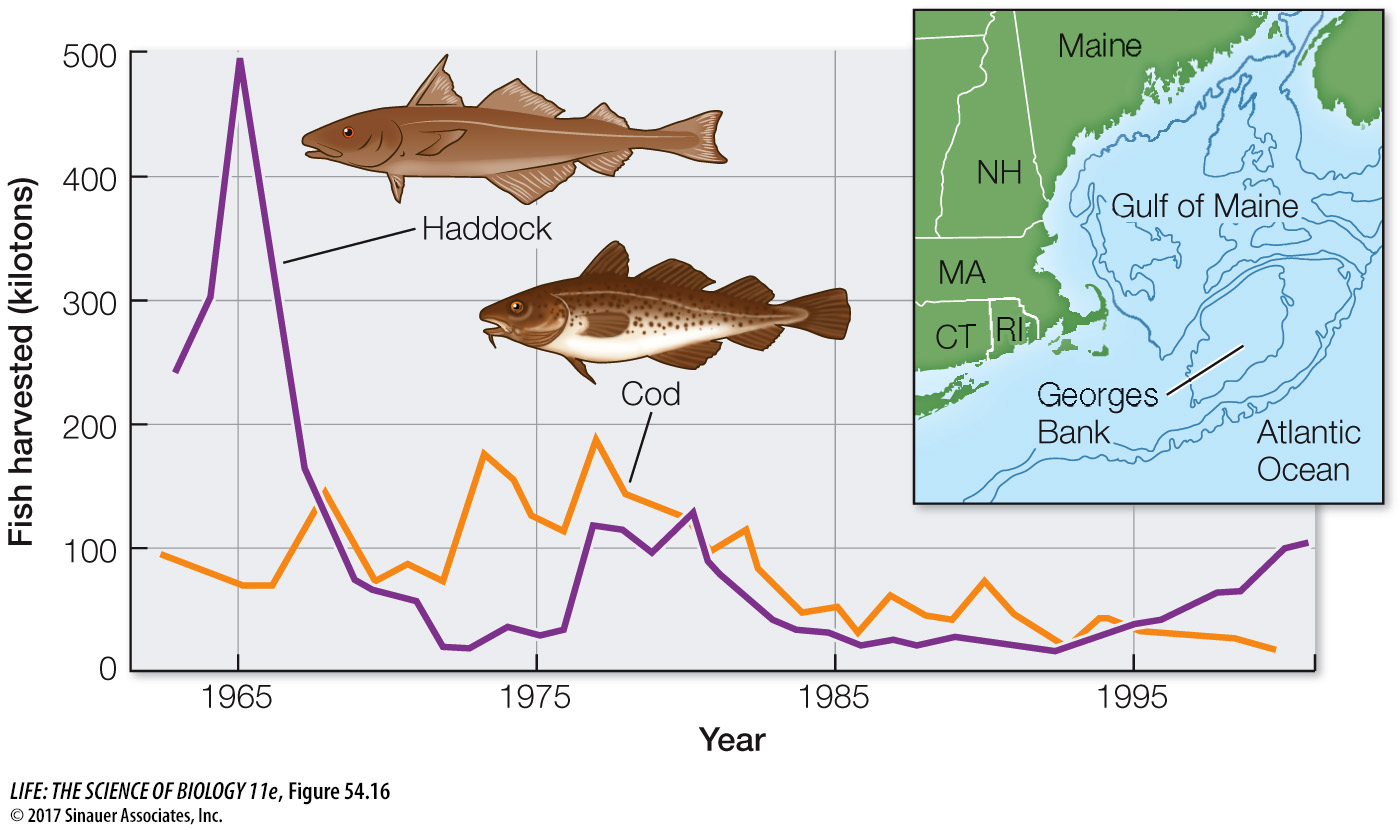Management plans must be guided by the principles of population dynamics
If we look at a logistic growth curve (see Figure 54.8), we can see that the number of births tends to be highest when a population is well below its carrying capacity. Therefore if we wish to maximize the number of individuals that can be harvested from a population, we should manage the population so that it is far enough below the carrying capacity to have a high birth rate. Hunting and fishing regulations are established with this objective in mind.
Fish can, however, be overharvested, as illustrated by the story of the black rockfish. Many fish populations have been greatly reduced because so many individuals were harvested that the few surviving reproductive adults could not maintain the population. For example, Georges Bank, off the northeast coast of North America—

Many rapidly reproducing species can recover if *overharvesting is stopped, but recovery is more difficult for slowly reproducing species. Just as they did with the humpback whale, twentieth-
*connect the concepts A study of fisheries worldwide shows a dramatic increase in harvest rate, leading to collapses of fisheries. But the effects of fish harvesting vary widely across the globe, in part because of current fisheries’ restrictions to recover once-
Whether we want to manage the sizes of populations of desirable species for sustainable harvesting or of undesirable species for control purposes, the same principles apply. Biological control is the use of natural enemies (predators, parasites, or pathogens) to reduce the population density of an economically damaging species. In many cases the target species is a pest only because it has been introduced to a new area. Natural enemies used for biological control are often obtained from the native region of the pest species. Biological control became popular in the nineteenth century after an outbreak of cottony-
Sometimes, however, introduced natural enemies not only fail to have any effect on the pest they were imported to control but also, freed of their own enemies, become pests themselves. This fact underlies the horror story of the cane toad (Rhinella marina) in Australia. This Central American toad was introduced to control cane beetles attacking Australian sugarcane fields. But Australian cane beetles stay high on the upper stalks of the plants; the toads could not reach that high, and thus had no effect on the beetle population. Unfortunately, they had massive effects on other species.
All stages of the R. marina life cycle are poisonous, and Australian reptiles (including snakes and lizards) and mammals that eat them usually die. With no enemies to limit their population growth, cane toads grow fast and outcompete native amphibian species for resources. The toads have spread from northern Australia down the east coast, where they threaten native frog species by preying on them as well as by competing with them. The Australian government is forced to spend millions of dollars in attempting to reduce their numbers.